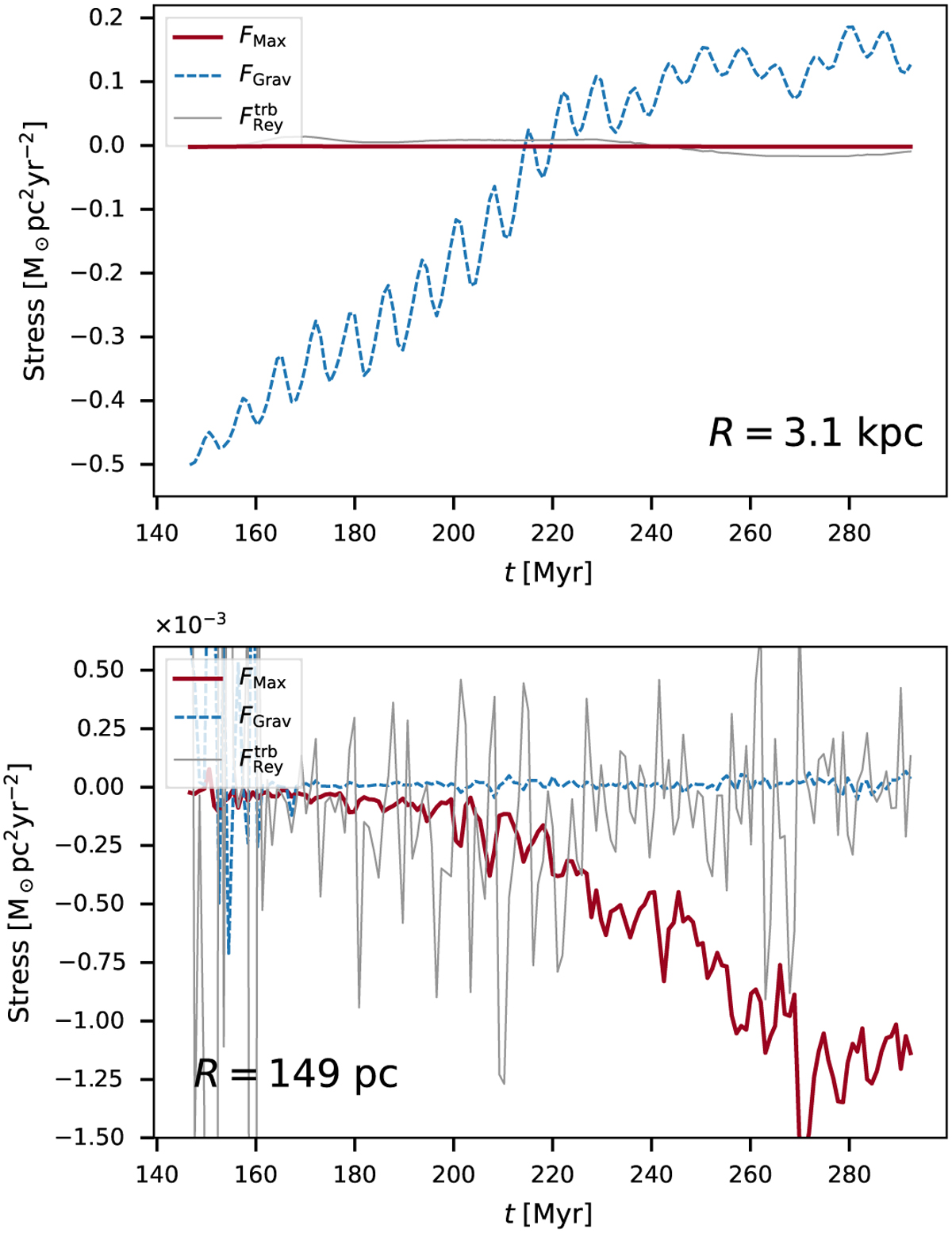Fig. 25

Download original image
Turbulent Reynolds, Maxwell, and gravitational stresses at a given radius as a function of time in the CHEM_MHD simulation. Top: at R = 3.1 kpc, which tracks the entire bar region. The oscillations on timescales t ≃ 7 Myr represent a torque-weighted orbital period of clouds orbiting in the bar region (Fig. 27 and recalling that angular momentum is not conserved in a non-axisymmetric bar potential). The overall upward trend is because angular momentum is removed by the bar at a decreasing rate as the gas reservoir that supplies the bar-driven inflow is depleted and the bar-driven inflow stops (Fig. 22 and Sect. 7). Bottom: R = l49 pc, which tracks what happens inside the CMZ gas ring. Maxwell stresses become dominant at t > 200 Myr, and show that magnetic stresses are responsible for the nuclear inflow from the CMZ ring inwards.
Current usage metrics show cumulative count of Article Views (full-text article views including HTML views, PDF and ePub downloads, according to the available data) and Abstracts Views on Vision4Press platform.
Data correspond to usage on the plateform after 2015. The current usage metrics is available 48-96 hours after online publication and is updated daily on week days.
Initial download of the metrics may take a while.


